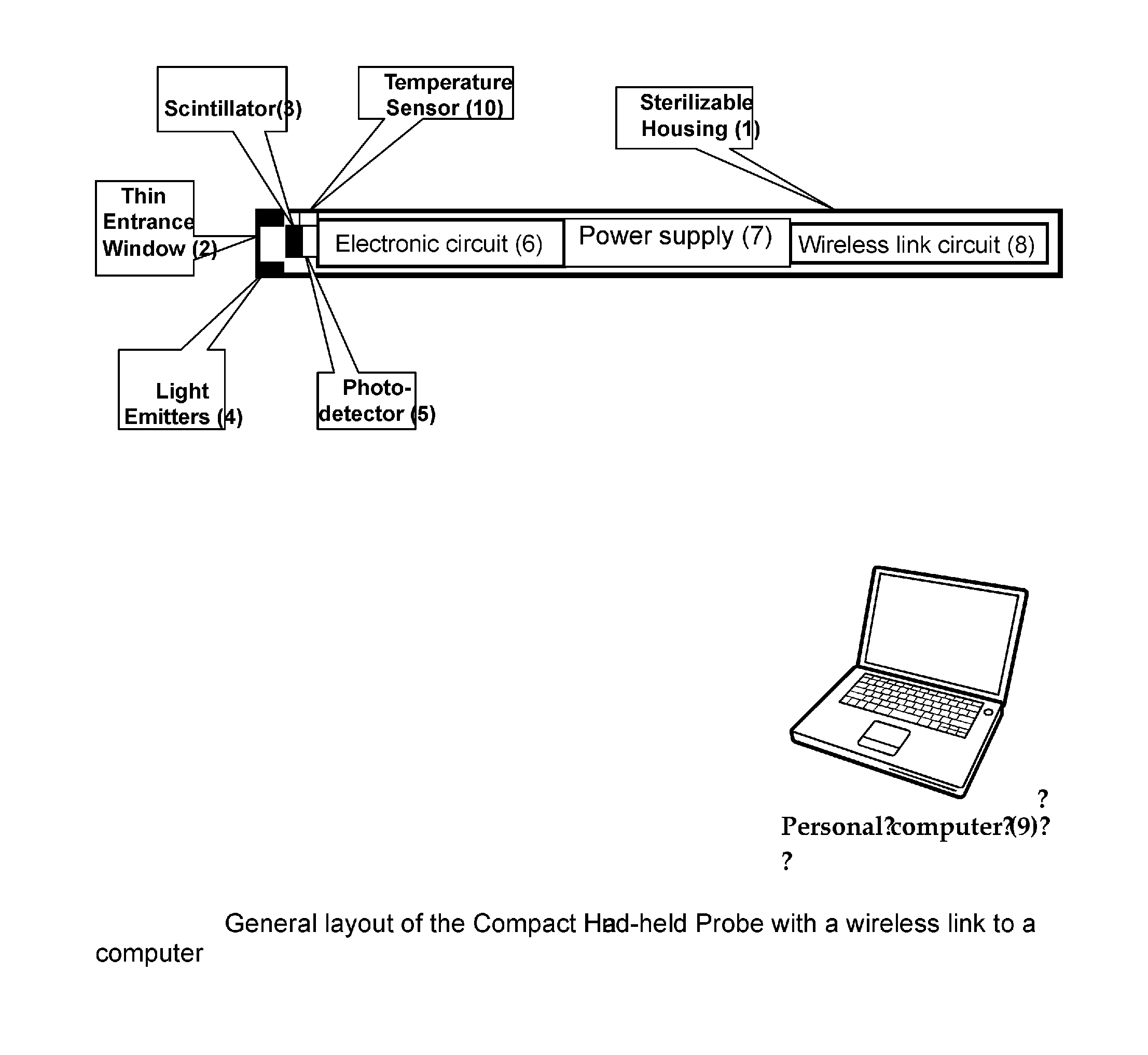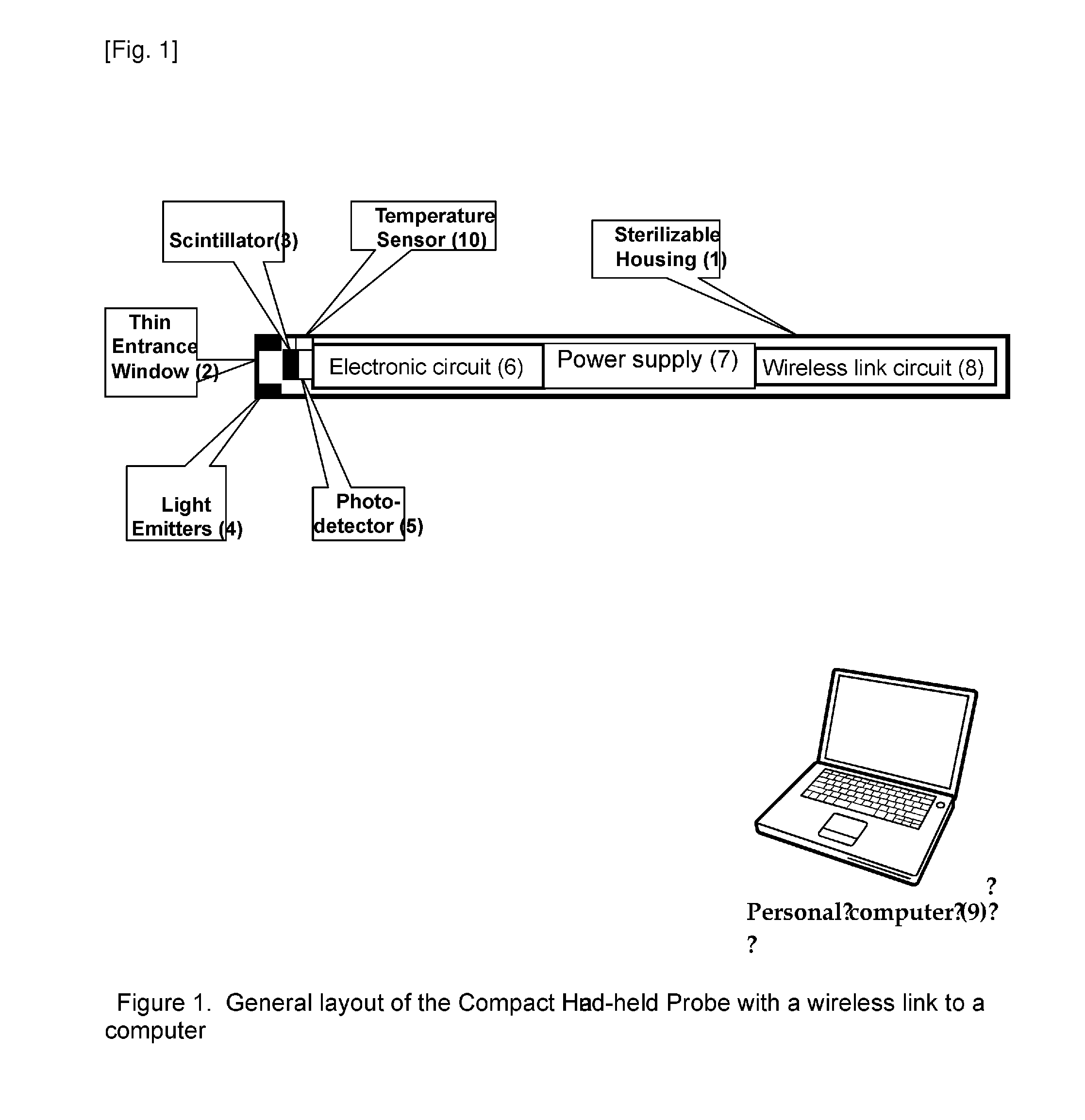Compact probe for tracer-assisted diagnostic and surgery
a tracer-assisted diagnostic and surgical technology, applied in the field of compact probes for tracer-assisted diagnostic and surgery, can solve the problems of difficult to distinguish tumoral areas from healthy tissues, large background, and relatively long radiation range, so as to eliminate all radioactivity risks, reduce costs, and high affinity
- Summary
- Abstract
- Description
- Claims
- Application Information
AI Technical Summary
Benefits of technology
Problems solved by technology
Method used
Image
Examples
Embodiment Construction
[0009]A new method (claim 1) and device (claims 2 and 3) is proposed which enhances efficiency of procedures using radioactive tracers and allows replace radioactive tracers by more cheap and safe fluorescent ones. The compact probe according to the invention is shown in FIG. 1. Preferred embodiments of the invention are listed in the dependent claims. The probe according to the invention is designed in a way which provides maximum convenience and simplicity in operation for the user, minimal weight and cost (potential disposability), preserving at the same time maximum performance. This is reached by introduction of several novelties.
[0010]The method consists in detection of signals emitted by tracers with time-resolved photon counting technique in a compact, simple and handy autonomous detector, which is supplied in a sterile packaging ready for operation, and transmitting those signals using wireless link to a remote computer (9), which performs most of the functions, such as: co...
PUM
 Login to view more
Login to view more Abstract
Description
Claims
Application Information
 Login to view more
Login to view more - R&D Engineer
- R&D Manager
- IP Professional
- Industry Leading Data Capabilities
- Powerful AI technology
- Patent DNA Extraction
Browse by: Latest US Patents, China's latest patents, Technical Efficacy Thesaurus, Application Domain, Technology Topic.
© 2024 PatSnap. All rights reserved.Legal|Privacy policy|Modern Slavery Act Transparency Statement|Sitemap


